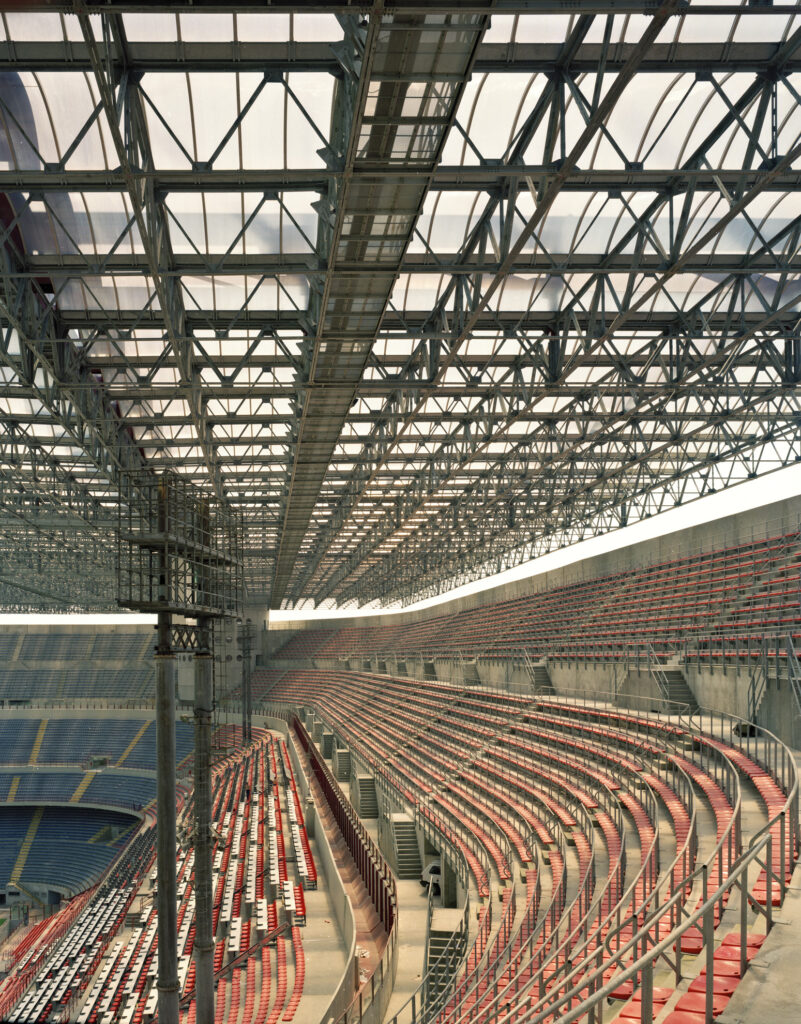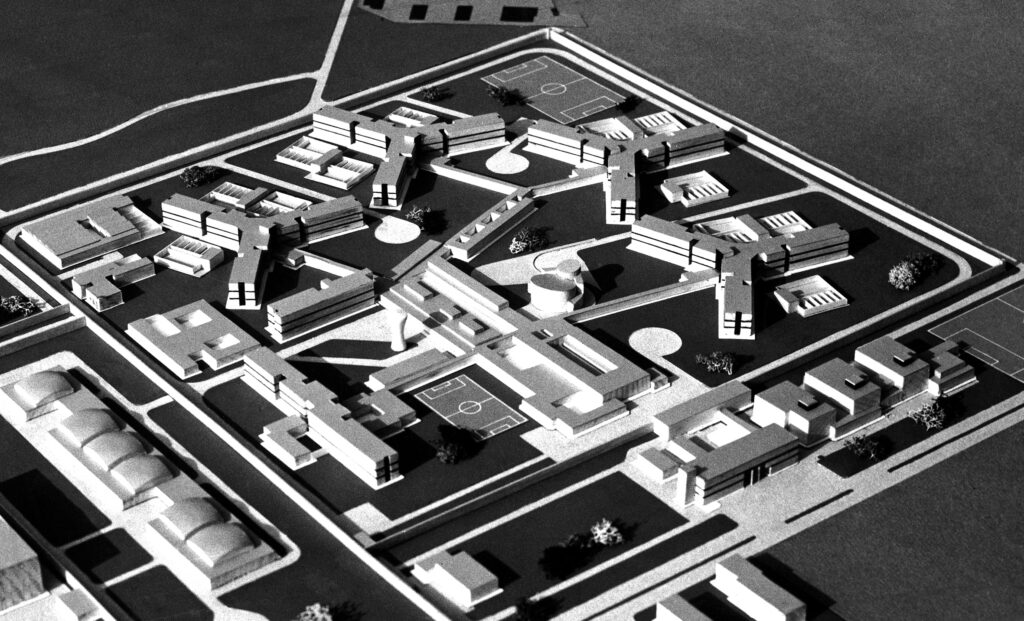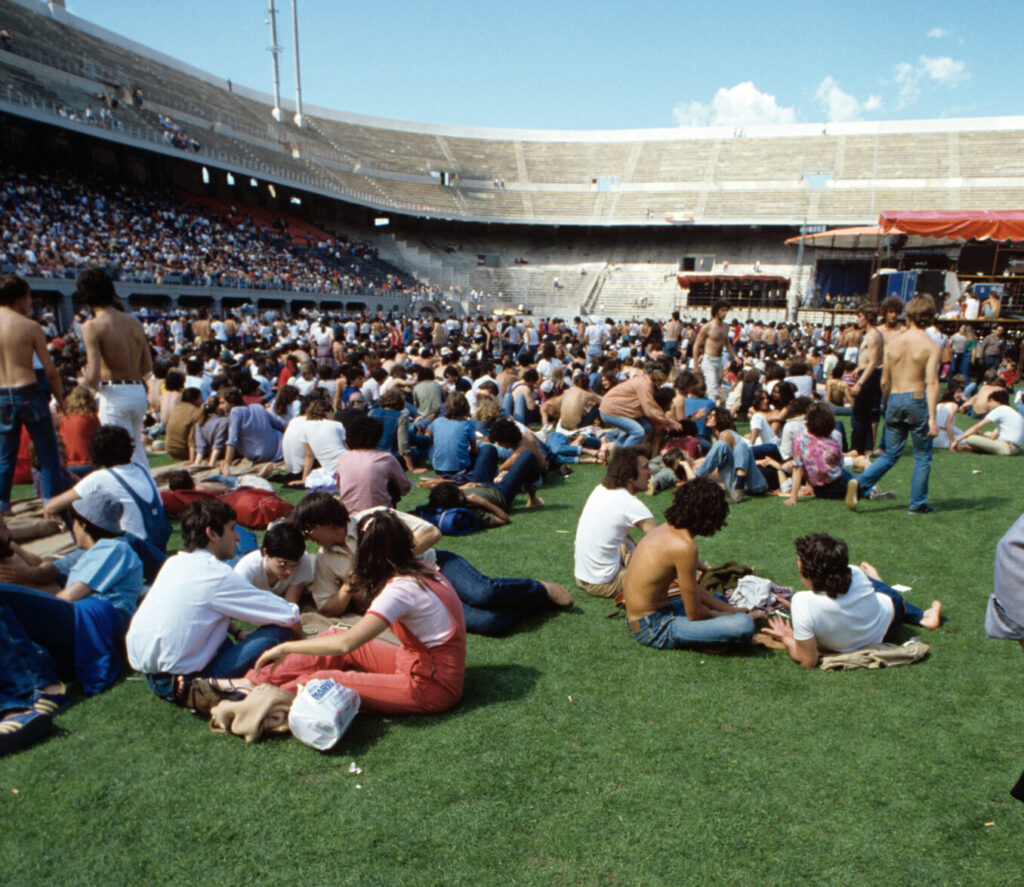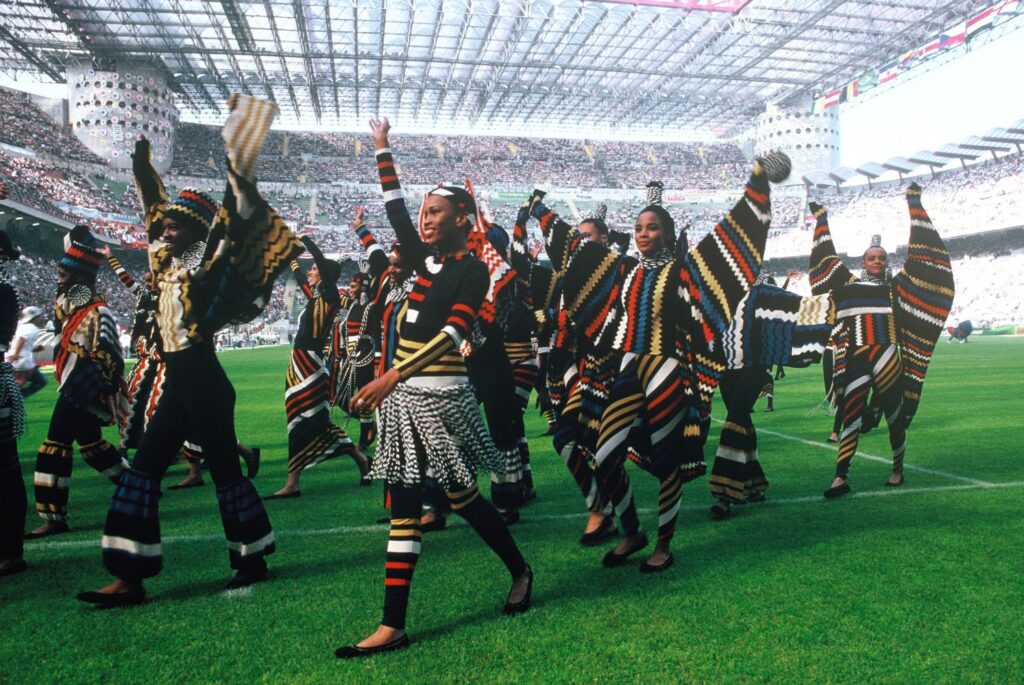The Third Tier

In 1990, San Siro underwent its third and final renovation. This was the construction of the Third Tier, which also coincided with the construction of the famous helical staircases, later inaugurated during that year’s legendary World Cup. On the occasion, the Italian publisher Electa did a huge book and organised an exhibition featuring drawings by Hoffer, the architect behind the stadium’s transformation. Photographer Vincenzo Castella was commissioned to document the birth of what would soon become one of Milan’s most recognisable landmarks. Castella would spend almost a year, nine months, photographing what he would have called a "steel city", documenting a pharaonic construction site. It was in various ways proportionate to its duty: building a symbol. The work that Castella will do, consisting of more than a hundred shots, not all edited, will not respect the classic causal or historiographic organisation that often falls back down on the narration of big events, as required by a certain inclination of thought and Western philosophy of history, focused on highlights.
Castella would instead start with an objection, a question that recurs throughout almost all his body of work: asking himself about the reasons behind something, about what is intrinsic to a precise moment. Over a cigarette and a coffee, Vincenzo shows me the original photographs from those years in his house museum. He tells me about the exhibition at the Triennale Milano, where he had installed some of these pictures, and emphasises that he is not interested in chronology. Rather, he is drawn to that “game without the ball”—a way of stripping narration of linearity, focusing on the effects of an image rather than the causes that produced it.
He points to the book’s construction site photos, where enormous volumes block the horizon and yellow cranes lift the sky. It’s hard to pinpoint the location—after all, one construction site is much like another, turning space into mere souvenirs. “The levelling of what little dry vegetation surrounded the site” Vincenzo says, “blended with this new iron, already half-rusted. That’s when I understood what the true subject of my work would be: the end. I wasn’t interested in the engineering feat, fascinating as it was—photos of the lifts, taken at the time without much thought, but which today have gained significance.”
That’s when I understood what the true subject of my work would be: the end.
I think it’s here, in this last sentence, that one of the cardinal points of Castella’s photographic horizon emerges: a sort of repulsion toward sectarian, indisputable judgment.
Therefore, everything deserves investigation, everything must be seen and analysed—on the verge of forensic practices, everything can be pushed to its limits because it resurfaces over time. I reflect on this as Vincenzo and I revisit his shots from thirty years ago. To a certain extent, Castella’s practice stops just short of making an argument. Nothing is meant to explain itself because nothing is meant to be fully understood. The question matters precisely when it resists a stable answer and when it preserves the possibility of a latent unfolding.

There is, in some way, an idea of research in this attitude that becomes a method. This is perhaps the most characteristic aspect of Castella’s practice: seeking the continuation of research, where the questions are asked over and over again, constantly emerging. It is in these terms that Vincenzo tells me about the unfolding of his work and his experience witnessing the construction that would bring San Siro to be inaugurated at the 1990 World Cup: standing before a construction site that, in Vincenzo’s own words, appeared as “a space created to build a mysterious object, the outcome of which no one understood.” The reasons for this opacity, even if they could apply to any construction site, lie precisely in the way the San Siro construction site was intended to be: not to build the stadium, but, first and foremost, the machine that would then build the Third Tier. This is where the impression arises that it was a city of steel, dedicated to constructing a mechanism, which would later realise the stadium as its function.
“In stadiums, except for a few fortunate positions, you don’t see the game. You see the fans. The people beside and around you. This is an interesting fact.”
In the middle, detritus and remains scattered on a formidable scale, and, for this reason, again incomprehensible. The engineering work was, for all intents and purposes, pharaonic. Always with this voice, calm and wavy like water, Vincenzo tells me about the great challenge of elevating the “rafts,” the large welded and unsuspected volumes that would later become the Third Tier: “Incomprehensible objects, for which I tried to take photography not reduced, rather expanding it in its tonal measures, as if they were unique objects. Imagine, many thought they were debris when they were actually objects in construction, brand new but unpainted.” It thus tells the story of how they would suddenly grow old, almost as if a symbol, a monument, has to be born already with the support of time behind its shoulders, of an endless past.

Always this lack of understanding, then, always this opacity, which Vincenzo tells through metaphors, “like a suitcase in a room: you don’t know if you’ve arrived or if you’re leaving.” This lack of understanding would be resolved all of a sudden, right after the work for the Third Tier and the helical staircases were finished, unveiling the new city’s arena. The stadium, elevated to the Third Ring, happens suddenly. The construction site empties, and the remaining spaces, from which Vincenzo obliquely photographs the space and its objects, fade away. The last photos taken thus show the San Siro Stadium, which changed the face of the Stadio Meazza, the real name of San Siro Stadium, and altered the view from the stands, introducing a mysteriously vertical, almost zenithal gaze, he says, pointing to the cigarette pack. The Scala del Calcio, Vincenzo says, was such because the spectacle from the first and second rings was immediate: you could hear everything, see everything, be part of the game. Now, “In stadiums, except for a few fortunate positions, you don’t see the game. You see the fans. The people beside and around you. This is an interesting fact. What are they looking at? What are they seeing? We’ll never know.”




